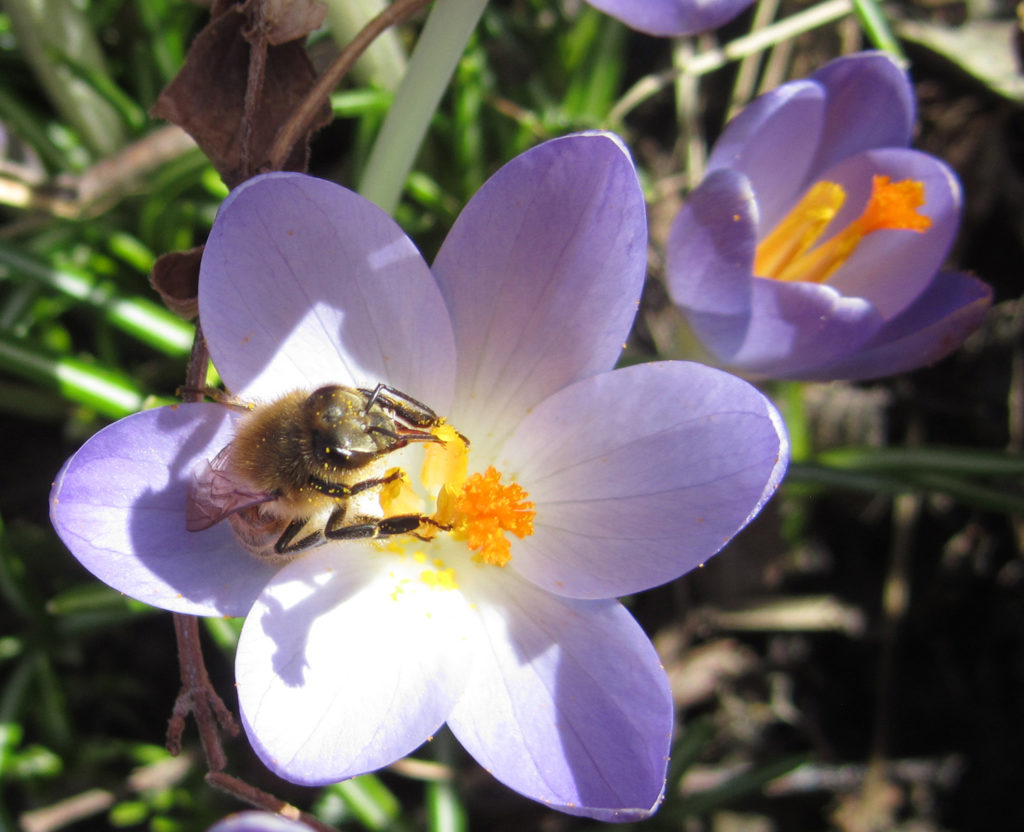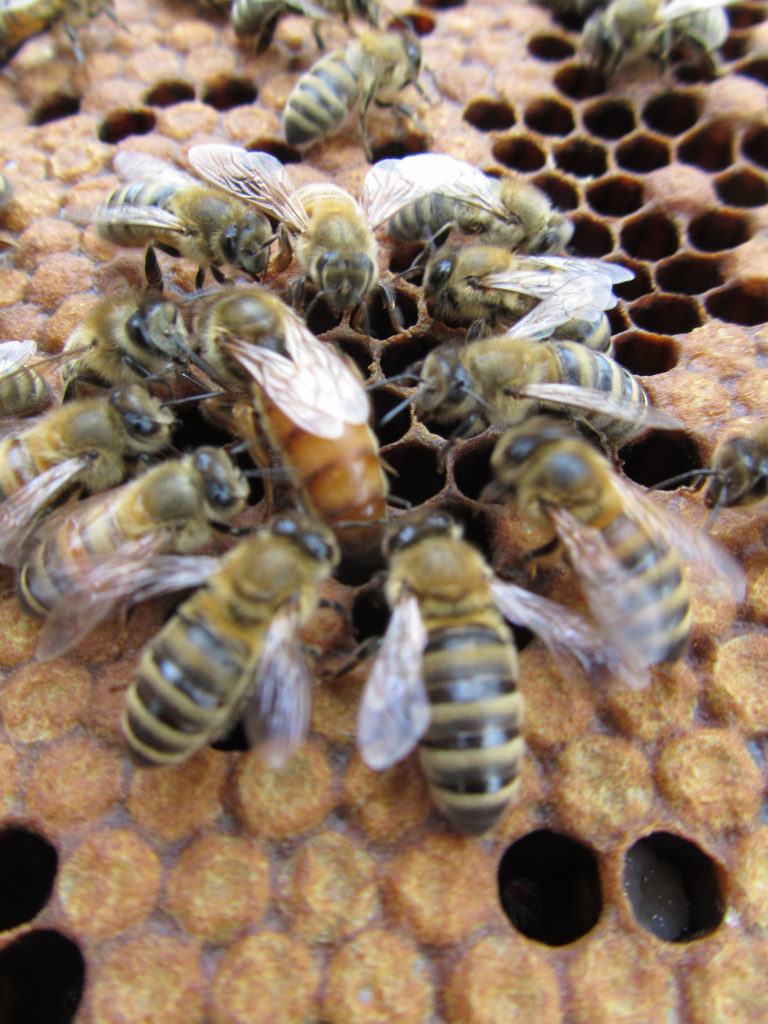Bee Lines: Notes on a beekeeper’s spring
by Sam Hall –
Hopefully by the time that you will be reading this it will be warmer than the 22 degrees that it is while I’m starting to write it. I would like to believe that nature has screwed up but it is more likely that we have. Later this week the warm up is supposed to start with a run at 60 on Friday the 13th which is probably in some way appropriate. If it does I’m prepared as you should be to start feeding our bees with a syrup of half sugar and half water and a pollen patty. Currently, I am feeding sugar bricks as I don’t want any more moisture into the hive than is already there.

If you do start feeding continue until there is sufficient natural nectar available which will first probably be from the maples and willows. Skunk cabbage and winter aconite as well as crocuses the bees will work but it has been too cold when they were in bloom for the bees to be out. Usually, when there is sufficient natural nectar they will slack off on the syrup. That is not always the case so you should constantly be aware of nectar availability in your area when you are feeding. If there is no nectar available and you are not feeding, the bees will stop producing new brood. Usually in my area there is a dearth of nectar in late July or early August. The bees will always stop feeding on the pollen patty when natural pollen is available as they much prefer it. It is my experience that there are generally some natural available pollen sources after the beginning of May.
Normally, I would look at splitting (making two or more new hives from an existing
colony of bees to replace winter loses) my surviving colonies starting around April 21st. Because of the cold it will probably be later this year possibly even the first week of May. Even in this cold the queen is laying in force and there are already new bees from the eggs that she started laying in mid February. Every beekeeper has their own way of splitting depending on what they are trying to accomplish.

I start my split in a five frame nuc box. Usually I take a frame of fairly solid brood with maybe a little honey and pollen on it, a frame with fresh eggs and open larvae with the attached nurse bees. I put a frame of honey on one outer side or the other. Very often I will use a frame of honey from a winter dead out. I always take my hive tool and do a few scratches on the sealed honey so that it is open and the bees will readily go to it. I will finally take a frame with bees on it from the donor colony and shake them into the nuc to increase the number of bees in the nuc (a smaller, “starter” box of bees).
After I have made the nuc up I take it from the farm to my house which is about 10 miles and put it on a table behind my garage. If I have a new bought queen I will start the introduction process or simply let them make their own queen which will take about 30 days before you have a laying queen. I usually buy queens for these splits so that I don’t have to wait the 30 days and there are many things that can go wrong if you are relying on the bees own queen making, including having a bird or dragonfly pick the queen off on her mating flight. Within a week or two the nuc’s population reaches the point I return it to the beeyard and place it on top of the hive I want them in with both entrances facing the same direction. I may leave them a few days or if they are too crowded I hive them immediately. Remember a nuc can throw a swarm if they get too crowded for too long. It is also wise to keep a nuc with a mated queen throughout the summer in case of sudden queen loss.
“To see a World in a Grain of Sand And a Heaven in a Wild Flower Hold Infinity in the palm of your hand and Eternity in an hour” William Blake. Not sure why I often think of Blake when I’m beekeeping. In a colony of honey bees, I see the stresses, failures and goodness that also are akin to our human condition and it gives me hope.
Sam Hall is a Western NY beekeeper who first worked bees as a child growing up on a ‘dirt farm’ in Allegany County, NY. He has kept bees for most of his adult life and believes that his mistakes ‘far outnumber his successes.’